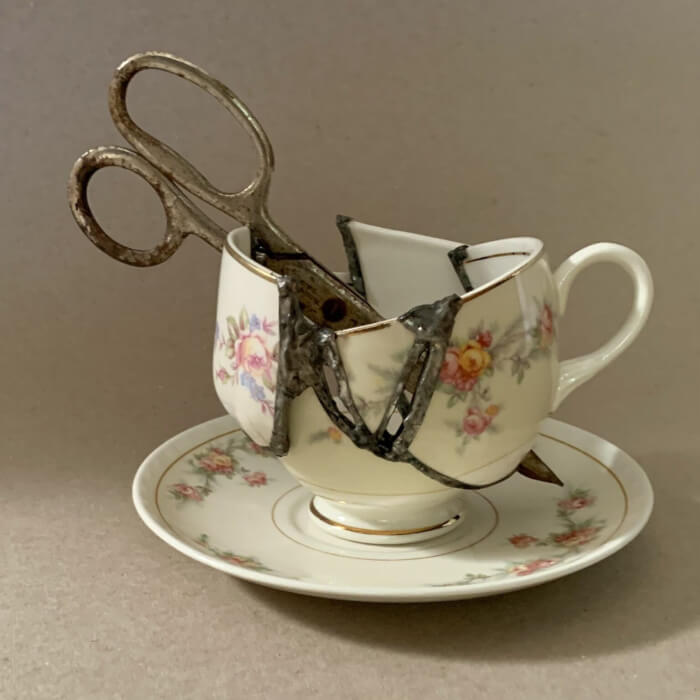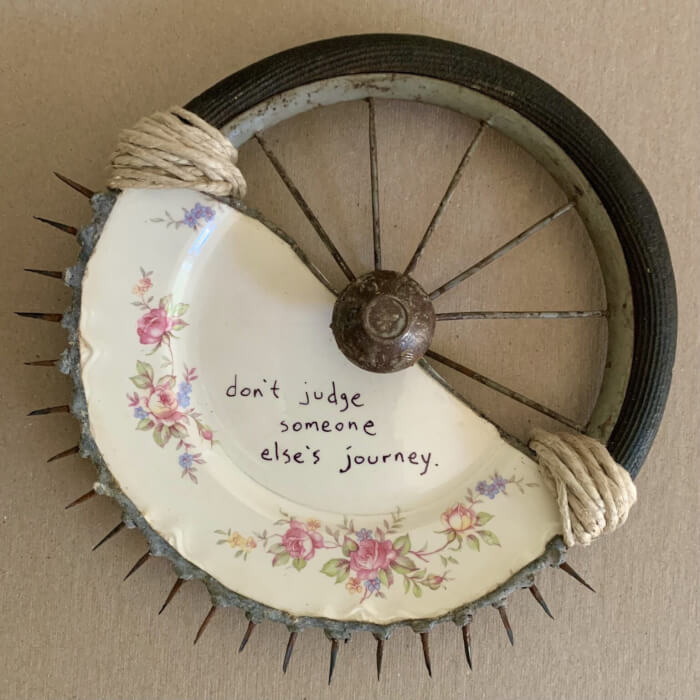Using Rusted Wires And Scissors, This Artist Fixes Broken Vessels (18 pics)
The Japanese art of mending broken ceramics has been perfected by American artist Glen Martin Taylor, who gives it a Western twist by using nails or wires instead of powdered gold. He addressed what the cracks in our kitchenware can reveal about us during difficult times.
The Japanese invented kintsugi, a method for mending broken ceramics, several centuries ago.The resin from the urushi tree combined with gold or silver powder was used to reassemble the pieces.One theory holds that the method first appeared in the 15th century, when a shogun hired Chinese artisans to fix his cup, but the results didn't meet his aesthetic standards.When Japanese craftsmen took on the project, they glued the cup with urushi lacquer, making it even more elegant and gorgeous than it already was.The method was so widely used in the 17th century that people began purposefully breaking their kitchenware. Additionally, Kintsugi reached the West.
The Freer Gallery of Art in Washington, DC, hosted an exhibition of pottery that had been repaired in 2009. Even Kylo Ren's helmet from Star Wars: The Rise of Skywalker was created to resemble it. Jewelry brands continue to be inspired by its aesthetics.
But kintsugi is more than just patching up broken ceramics. It perfectly embodies the Japanese idea of wabi-sabi, or the beauty of flaws. It covers more than just looks. This philosophy holds that you should embrace all of your scars, including spiritual ones, and not try to cover them up. The scars that remain where wounds once were can serve as a reminder of one's tenacity. While using less sophisticated materials than powdered gold and resin, American artist Glen Martin Taylor also uses cracked pottery, such as chains, barbed wire, adhesive tape, and nails. He puts forth kintsugi as a way to help people accept themselves. Here are some of his best works !
#1
 Source: Glen Martin Taylor
Source: Glen Martin Taylor
#2
 Source: Glen Martin Taylor
Source: Glen Martin Taylor
#3
 Source: Glen Martin Taylor
Source: Glen Martin Taylor
#4
 Source: Glen Martin Taylor
Source: Glen Martin Taylor
#5
 Source: Glen Martin Taylor
Source: Glen Martin Taylor
#6
 Source: Glen Martin Taylor
Source: Glen Martin Taylor
#7
 Source: Glen Martin Taylor
Source: Glen Martin Taylor
#8
 Source: Glen Martin Taylor
Source: Glen Martin Taylor
#9
 Source: Glen Martin Taylor
Source: Glen Martin Taylor
#10
 Source: Glen Martin Taylor
Source: Glen Martin Taylor
#11
 Source: Glen Martin Taylor
Source: Glen Martin Taylor
#12
 Source: Glen Martin Taylor
Source: Glen Martin Taylor
#13
 Source: Glen Martin Taylor
Source: Glen Martin Taylor
#14
 Source: Glen Martin Taylor
Source: Glen Martin Taylor
#15
 Source: Glen Martin Taylor
Source: Glen Martin Taylor
#16
 Source: Glen Martin Taylor
Source: Glen Martin Taylor
#17
 Source: Glen Martin Taylor
Source: Glen Martin Taylor
#18
 Source: Glen Martin Taylor
Source: Glen Martin Taylor
Share this article
Advertisement